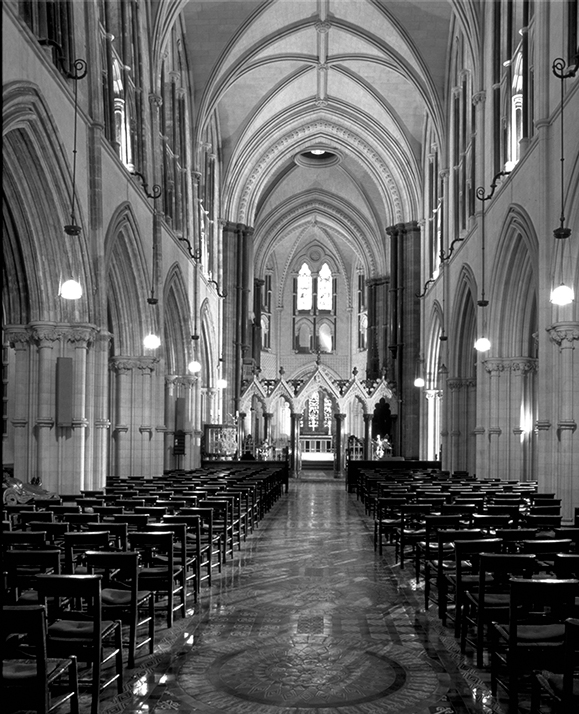The face of Catholic Ireland is changing beyond recognition. Ten years ago, well over 80 percent of Irish Catholics went to Mass at least once a week. That number is now down to about 60 percent and falling fast.
The empty pews seem staggering to anyone who has been away from Ireland for a while, and it’s noticeable that those who are at Mass are mostly older people. Fewer priests, sex scandals and the booming economy are all blamed for the decline. “There’s been a fragmentation of communities,” says Fr. John Dardis of the Dublin Diocese. “A growing materialism has helped break down the sense of community, and society has become more urban.”
Many blame the Celtic Tiger economy for the drop in church attendance, the theory being that as people get more money they become more independent and well traveled, and less reliant on the old religious codes of behavior.
While the economy boomed so dramatically during the 1990s that the average household’s disposable income increased by over 50 percent, and children’s pocket money doubled, contributions in the church collection plate rose by only eight pence per household, or five percent. But this is an imperfect explanation – it is in the very poorest areas of Ireland’s cities that the decline has been sharpest, not in the most affluent parts of the country.
“Dublin has been badly affected by the declines in attendance and in the number of priests,” said Dardis. “Parishes where there were three priests are being cut back to two, and those with two are being cut down to one.”
The Church is steadily losing its grip on society. In 1969, one Irish child in a hundred was born out of wedlock. Now 28 percent of children born in Ireland are born outside marriage, 3 percent above the European average. A recent national opinion poll showed that only 21 percent of Irish Catholics said they followed the teaching of the Church when making “serious moral decisions,” with nearly 80 percent saying they would follow their own consciences.
But Ireland is different from other Western European countries that have also witnessed a fall in attendance at church services (England too has seen a 20 percent drop in numbers at Mass over the last decade). In many other countries, when people stopped going to Mass they also stopped seeing themselves as Catholics, whereas in Ireland they continue to want to have their infants baptized, their children make their first communion and their deceased relatives buried by the Church.
“It’s an ambiguous time,” said Dardis. “People still want to believe but are unhappy with the Church. It needs to reach out to people before they forget their religion.”
The rise in the number of “four-wheel Catholics” (those who only drive to church for big occasions like christenings, weddings and funerals) has infuriated some in the Church hierarchy. Dr. Michael Smith, the Bishop of Meath, wondered aloud in February whether the Church should be obliged to educate those with no commitment to the faith, and many others are asking if people who never go to Mass have the right to send their children to Catholic schools.
Ireland, again, is different from most European countries in that its government has relied on the Catholic Church to provide primary and secondary education, and has no national school system of its own.
The Church’s dilemma is cyclical – if it turns away children from its schools they are unlikely to be Mass-goers when they grow up, but if it accepts them without any conditions it could end up providing an education service for a public without any commitment to the Church. In the short term, most Irish people will want to be married and buried as Catholics even as fewer and fewer of them actually go to church. “People lose out on the full richness if they don’t go to Mass,” said Dardis. “It’s like being a soccer player – you have to train every week; you can’t just turn up for the cup finals.” ♦


Leave a Reply